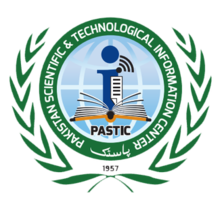Comparative Potential of Histological Effect in Antioxidants to Prevent Doxorubicin Induced Toxicity in Male Infertility in Rats
Abstract
Objective: This research intended to compare histological impacts of various antioxidants in preventing
doxorubicin-induced testicular toxicity and subsequent male infertility in rats.
Study Design: Cross-sectional study.
Place and Duration of Study: This study was conducted at the Animal House and Histopathology Laboratory of
Peshawar Medical College, Peshawar, Pakistan from May 2023 to April 2024.
Methods: An overall of 120 male rats were included in the research. The rats were divided into six groups: the
control group, the doxorubicin only group, and four treatment groups receiving doxorubicin along with
different antioxidants. The antioxidants administered were Vitamin C, Vitamin E, Coenzyme Q10, and
Selenium. Histological analyses were performed on testicular tissues post-treatment to assess the extent of
damage and protective effects of the antioxidants.
Results: The doxorubicin only group showed statistically significant histological damage, including marked
reductions in spermatogenesis and degeneration of seminiferous tubules. Antioxidant treated groups
demonstrated significant protective effects, with the Selenium group exhibiting the highest level of protection,
closely resembling the control group, followed by Vitamin E and Coenzyme Q10, which also provided
substantial preservation of testicular structure.
Conclusion: The study concluded that antioxidants, particularly Selenium, Vitamin E, and Coenzyme Q10,
provided significant protection against doxorubicin induced testicular toxicity in rats. These findings suggested
possible use of these antioxidants in mitigating male infertility associated with doxorubicin therapy.
How to cite this: Jan RU, Yunas S, Ara N, Amjid M, Fareed S, Rinkeviciute J, Badar A. Comparative Potential Of Histological Effect In Antioxidants To Prevent Doxorubicin Induced Toxicity In Male Infertility In Rats. Life and Science. 2024; 5(4): 544-551. doi: http://doi.org/10.37185/LnS.1.1.736
Copyright (c) 2024 Rahmat Ullah Jan, Salman Yunas, Nighat Ara, Adnan Badar, Mohammad Amjid, Shahid Fareed, Jurate Rinkeviciute

This work is licensed under a Creative Commons Attribution-NonCommercial 4.0 International License.














